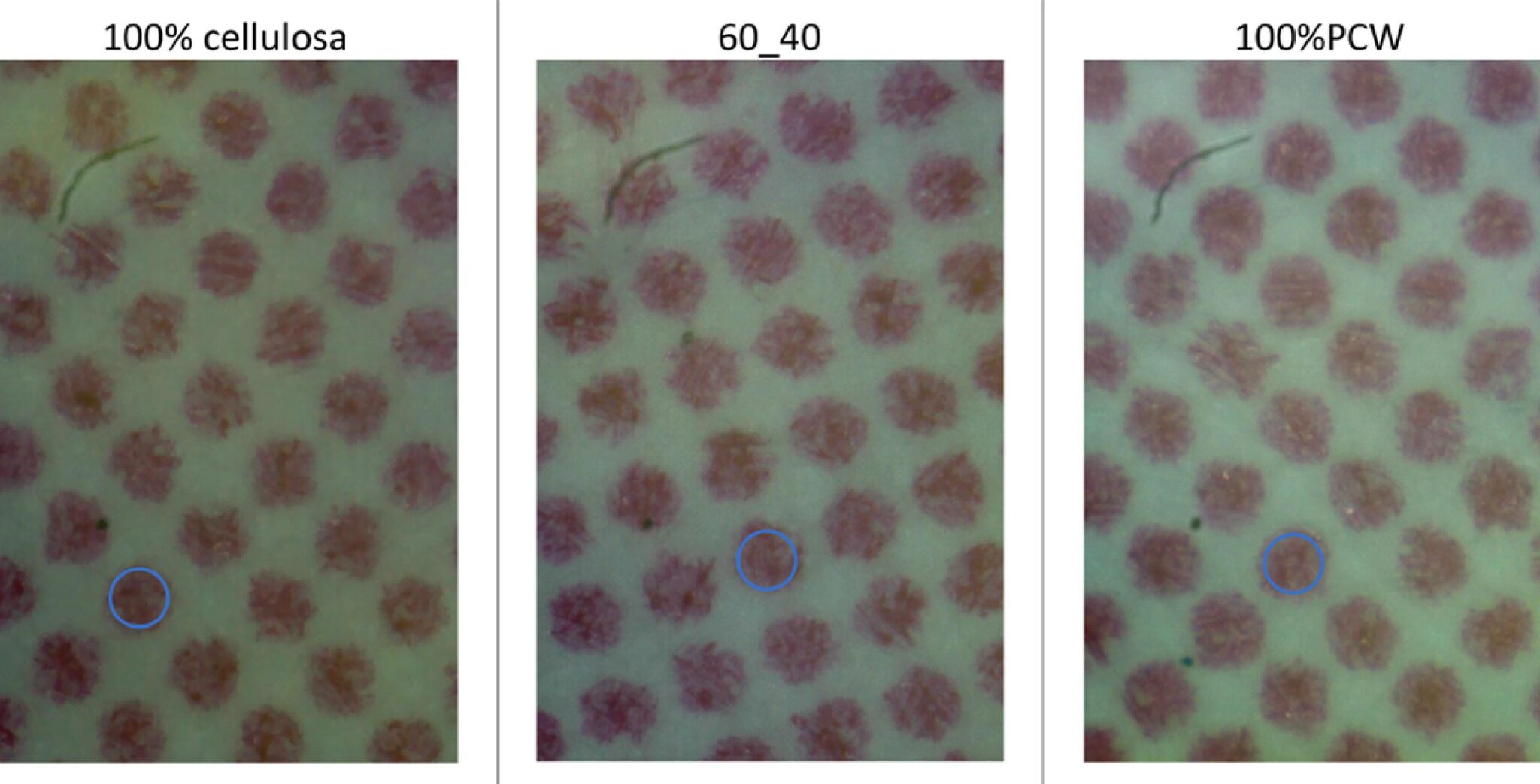Laboratory Analysis
The table below outlines the printing performance of all three samples. The tests were performed by an independent certified institute.
In particular:
- 100% Virgin cellulose
- 60% Virgin cellulose — 40% Post-consumer waste
- 100% Post-consumer waste
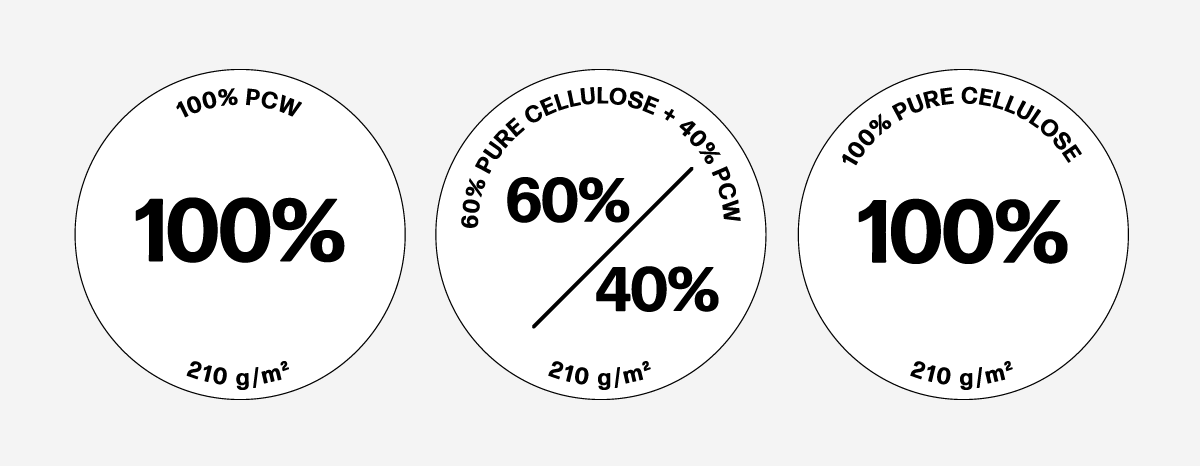
Light exposure test
This laboratory analysis simulates the yellowing of paper following a prolonged period of exposure to light. Paper made from pure virgin fibre is distinctly less sensitive than samples containing fibre from post-consumer waste.
Laboratory tests confirm that: paper made of 100% virgin fibre pulp ensures maximum performance levels. In particular: it is distinctly brighter and its folding strength is 3 times higher.
When choosing a PCW paper, it is therefore good practice to bear in mind:
- lower folding and creasing strength, with a high risk of failure in the printing press;
- the direction of the fibres is unstable;
- imperfections in the paper;
- less stability over time;
- problems such as non-uniformity of colour between different production batches;
- lower light fastness

Test: Printing quality analysis
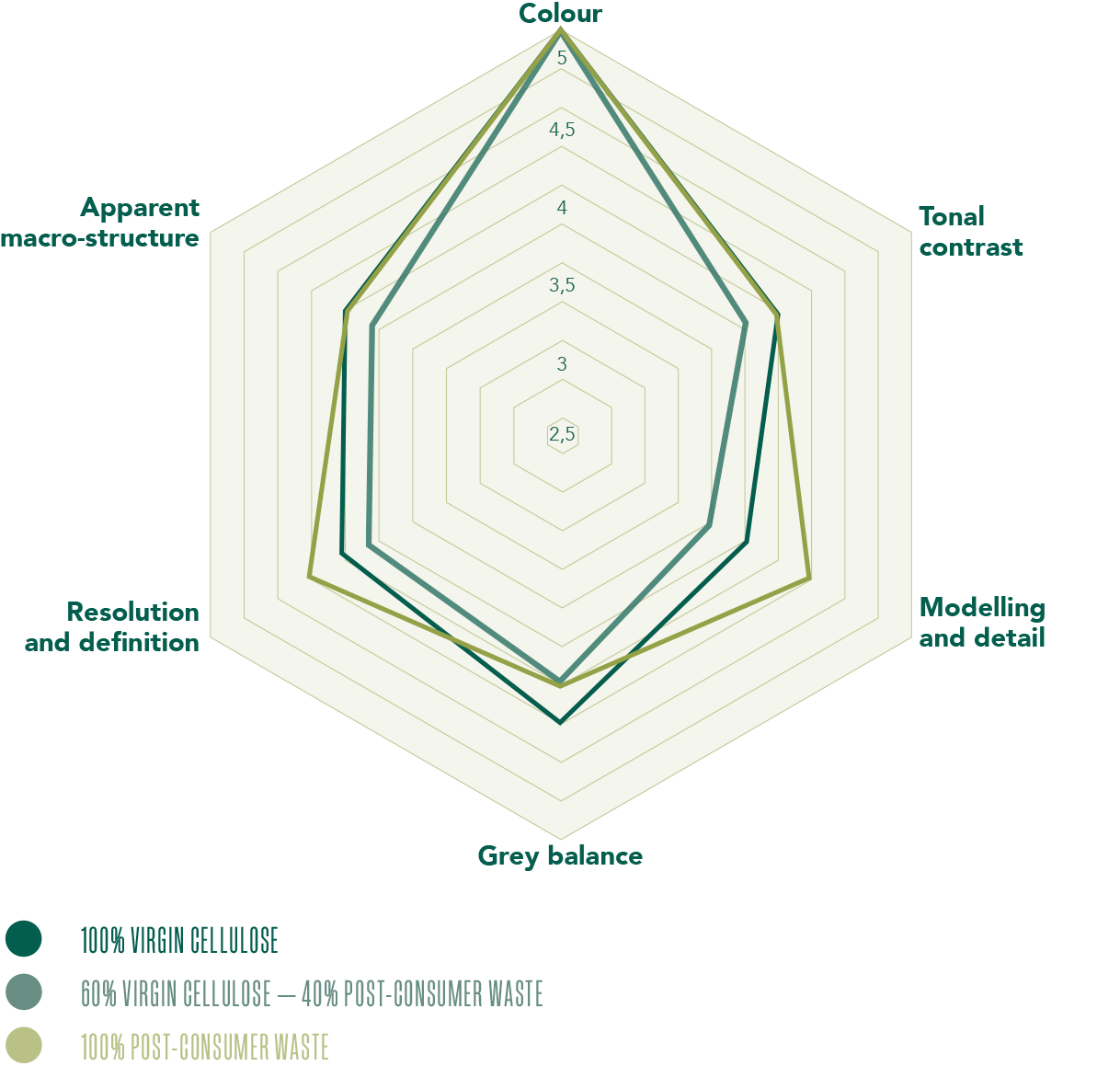
In more detail:
Tonal Value Sum - TVS
This instrument-based analysis is used to compare how much ink can be applied to paper and if the paper is capable of turning it into differences in colour.
The L* value, at the TVS point 300 indicated by the standards, is higher for paper with 100% wood-free pulp, while it is lower for 60% wood-free – 40% PCW paper and even poorer for 100% PCW. This means that paper made using 100% wood-free pulp, at the same colour coverage, ensures deeper „blacks“.

In more detail:
Colour test
Tonal instrument analysis carried out by comparing standard targets printed with oxidative inks on the three different papers, whose measurement allowed to create the three ICC profiles and the three gamuts.
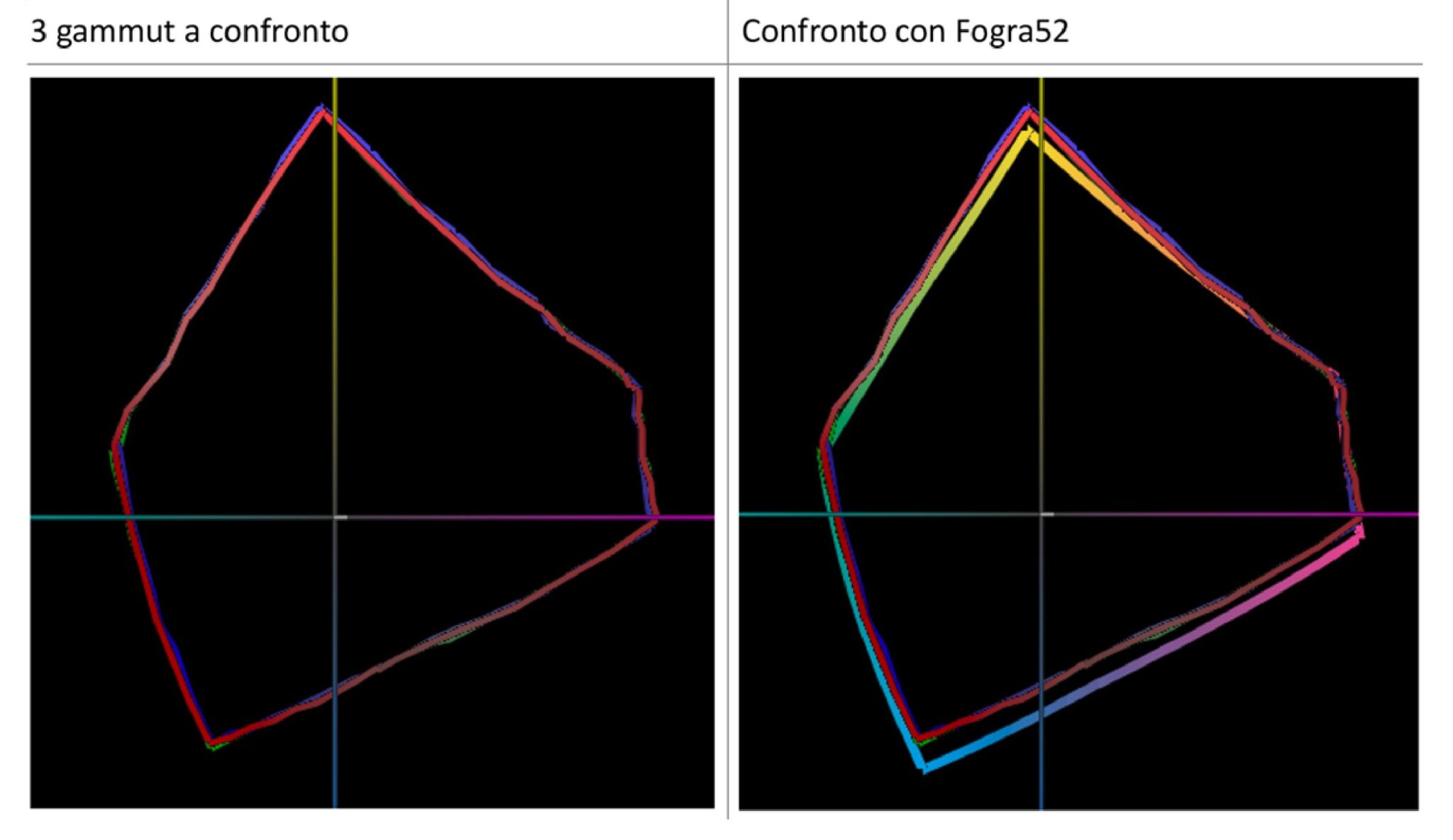
In more detail:
Stability
Register management highlights how different types of paper may provide higher or lower levels of printing stability.
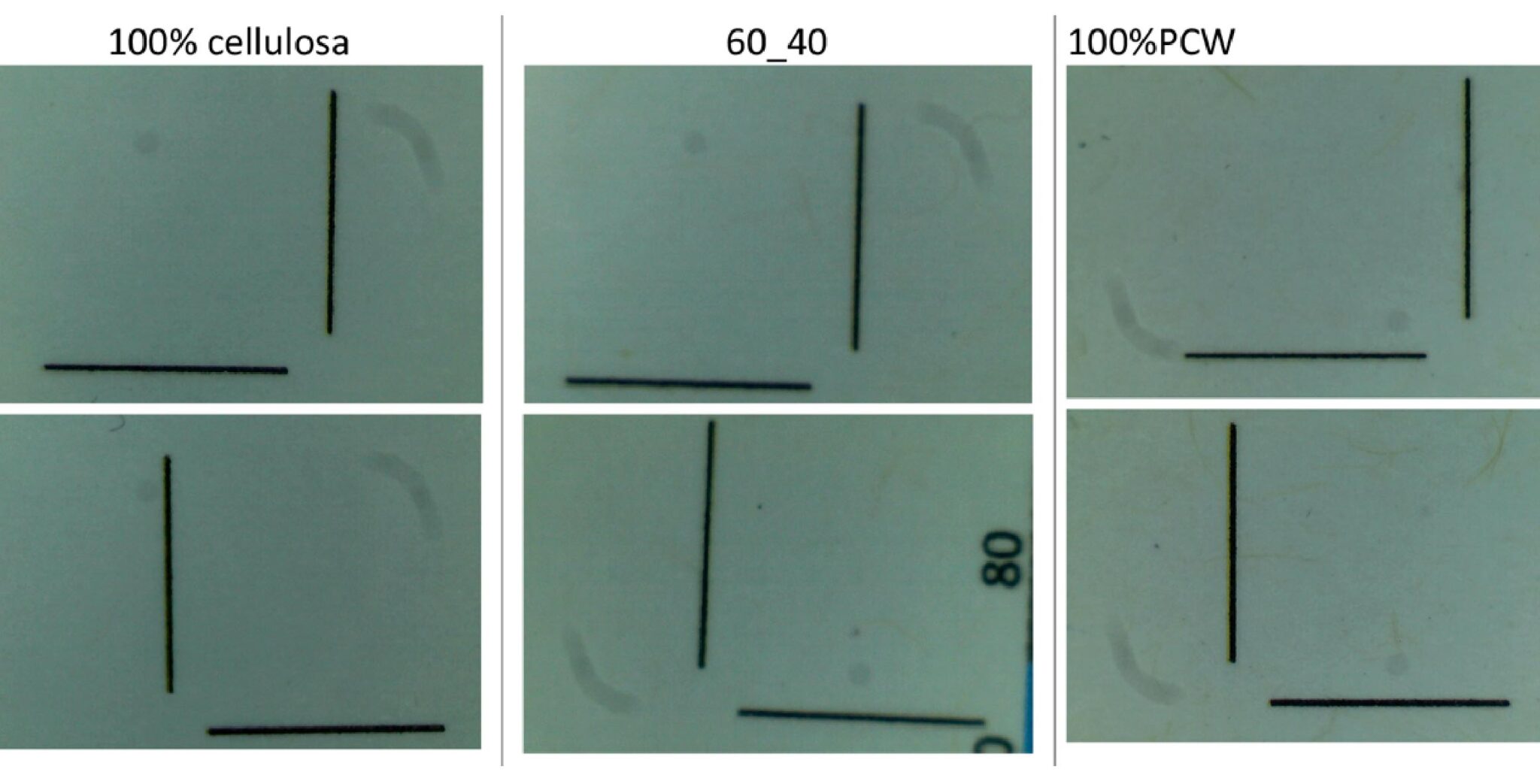
Approfondimento:
La riproduzione del punto di retino
Misurazione dei retini stampati per verificare la risposta del retino AM, sui diversi tipi di stampa e verificare lo scostamento della curva di riproduzione tonale rispetto allo standard. Le immagini mostrano come il punto di retino è riprodotto sul supporto stampato. Un punto di retino più nitido sicuramente dà vita ad una stampa più nitida e ricca di contrasto.
